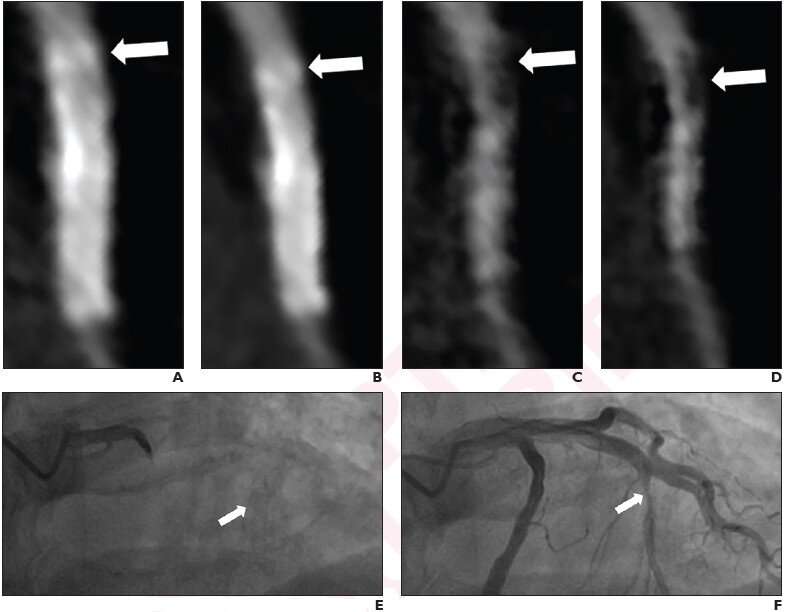
According to research published in the American Journal of Roentgenology (AJR), the combination of deep-learning reconstruction (DLR) and a subtraction technique yielded optimal diagnostic performance for the detection of in-stent restenosis by coronary CTA.
Noting that these findings could guide patient selection for invasive coronary stent evaluation, combining DLR with a two-breath-hold subtraction technique “may help overcome challenges related to stent-related blooming artifact,” added corresponding author Yi-Ning Wang from the State Key Laboratory of Complex Severe and Rare Diseases at China’s Peking Union Medical College Hospital.
Between March 2020 and August 2021, Wang and team studied 30 patients (22 men, 8 women; mean age, 63.6 years) with a total of 59 coronary stents who underwent coronary CTA using the two-breath-hold technique (i.e., noncontrast and contrast-enhanced acquisitions). Conventional and subtraction images were reconstructed for hybrid iterative reconstruction (HIR) and DLR, while maximum visible in-stent lumen diameter was measured. Two readers independently evaluated images for in-stent restenosis (≥50% stenosis).
Ultimately, coronary CTA using DLR and subtraction technique—with a combined (conventional and subtraction images) interpretation—yielded PPV, NPV, and accuracy for in-stent restenosis for reader 1 of 73.3%, 93.2%, and 88.1%, and for reader 2 of 75.0%, 84.3%, and 83.1%, respectively.
Source: Read Full Article
